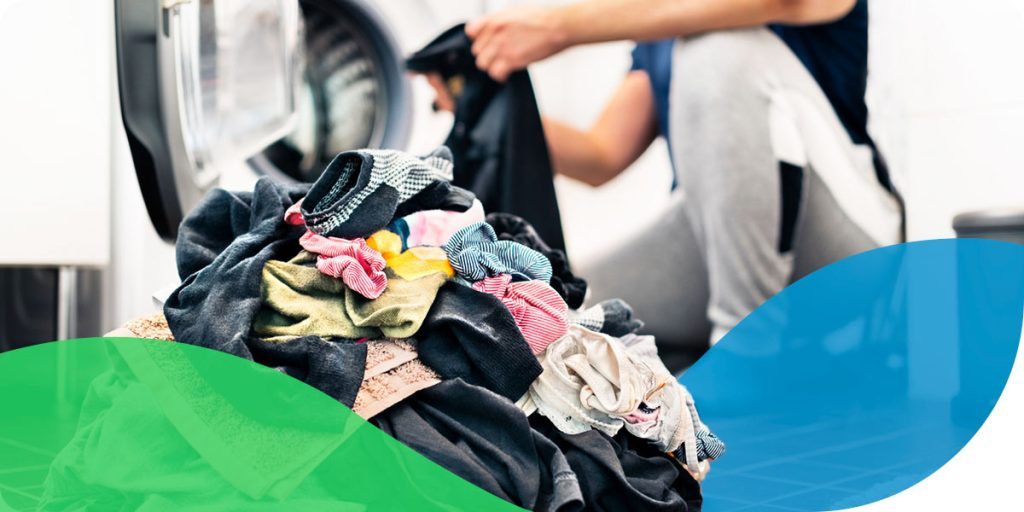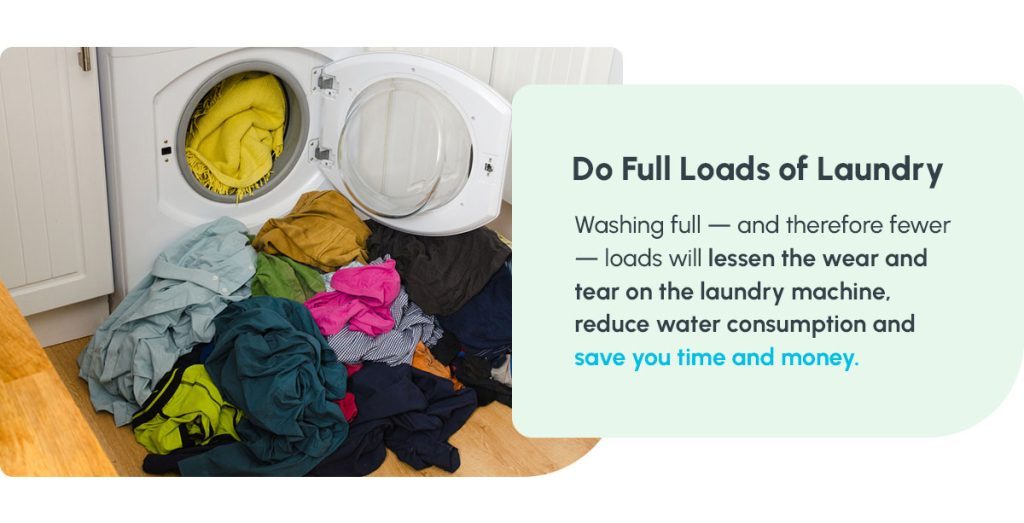


A fresh, clean batch of folded laundry brings joy and comfort to the launderer. However, how much a load of laundry costs in electricity, water and cleaning supplies can evoke entirely different emotions. Luckily, there are little, easy changes you can make to your washing and drying routine for a more cost-effective, streamlined experience.
You’ll likely spend an average of $170 per year on laundry supplies like detergents, softeners and dryer sheets. This number either drops or rises depending on which products you use, how you wash your clothes, where you do your laundry and how often.
The cost of electricity, equipment and maintenance also contributes to the yearly cost of doing laundry and fluctuates according to the same criteria. Today’s new energy-efficient washers and dryers use 70% less electricity than they did 30 years ago, which can lower your overall laundry costs.
You can bring down the price tag of a load of laundry significantly by making a few good choices and establishing an efficient laundry routine. Learn how to save money on clothes, bedding and other machine-washables with these cost-effective laundry tips:
Each article of clothing and linen you own has a different ideal washing schedule. The more infrequently you wash your garments, the less electricity, water and detergent you’ll use in the long run. By washing your clothing and bedding only when they genuinely need a cleaning, you’ll save money and lower your carbon footprint. Use this guide to help decide when to launder what:
Materials that frequently come into contact with animals, smoke, debris, dust, small children or contaminants may need to be washed more regularly. Weigh up your unique lifestyle against these guidelines to find a washing schedule that works for you, your clothes and your wallet.

Wait until you can fill the washing machine to the top before doing your laundry. Even if your washing machine is less than half full, it uses the same amount of energy as if it were fully loaded. Washing full — and therefore fewer — loads will lessen the wear and tear on the laundry machine, reduce water consumption and save you time and money. If you’re paying per load at a communal laundry facility, you’ll spend less per month washing the same number of items.
Have you considered you might be using more laundry detergent than you need? While reading the labels of the products you buy is a savvy solution, keep in mind that companies may exaggerate how much detergent you really need to use so you’ll buy more of their product quicker.
Researchers suggest one tablespoon of detergent is more than enough for an average eight-pound laundry load. Using too much soap actually prevents your clothes from getting clean and leaves your items starchy and scratchy. Excess detergent can also lead to white, patchy residue and add money to the cost of a load of laundry.
To get the most out of your purchase, measure exactly how much detergent you need instead of pouring it straight into the machine by eye. Being sparing with your detergent makes it last longer, and it can also prolong the health of the washing machine by reducing the buildup of soap scum.
Electricity costs less at different times of day, depending on your season and region. Fewer people are using electricity during off-peak times, so powering laundry machines is more affordable. On average, off-peak hours are between 11:00 p.m. and 7:00 a.m. during the week and all day on weekends. The best time to do laundry to save money based on electricity prices is in the early morning, at night or on a Saturday or Sunday.
As long as you’re folding your laundry after drying, your things should stay relatively wrinkle-free due to the types of fabric most modern clothes and sheets are made of. Irons use electricity unnecessarily and can take up hours of your precious time. Ditching the iron can also save you from accidental burns — both on your clothes and your body.
Frugal shoppers would also benefit from walking past ad-hoc laundry luxuries like softeners and scent boosters in the aisle. Almost all detergents are already scented, so there’s no need to double up products. If you want to add a light scent to your clothes, you can add a few drops of your favorite essential oil to a wool dryer ball. Skipping softeners also protects washing machines, linens and clothes from any waxy buildup.
Selecting a high-quality washer and dryer is a smart choice for both your clothes and your budget. Well-made machines are more durable and reliable and often come with access to a helpful service team for maintenance and repairs.
Your washer and dryer settings can work to your advantage in several ways. By picking a colder wash, you can save up to half your money on energy expenditure for that load without impacting the quality of the wash. You can trim costs even more by choosing the air dry setting on the dryer or simply lowering its temperature.

Whether your laundry room is in a gym, a college, a campground or a hotel, choosing a quality equipment supplier is essential — both for your users’ happiness and the institution’s healthy functioning. Caldwell & Gregory offers commercial laundry solutions using innovative app- and card-operated technology and is committed to excellent, thorough customer service and maintenance. Feel free to contact our team of experts to give your commercial laundry facilities the upgrade both you and your users deserve.